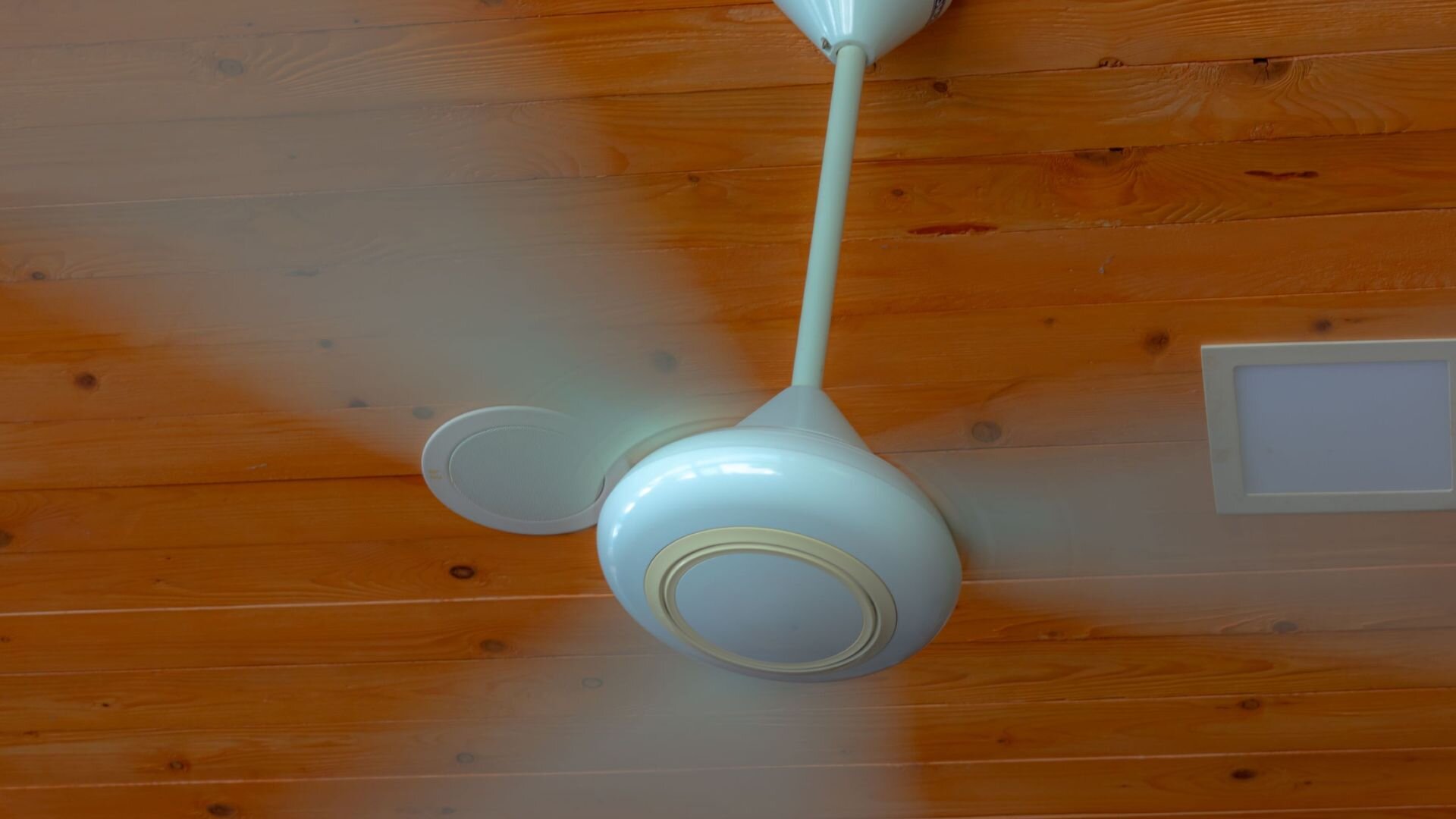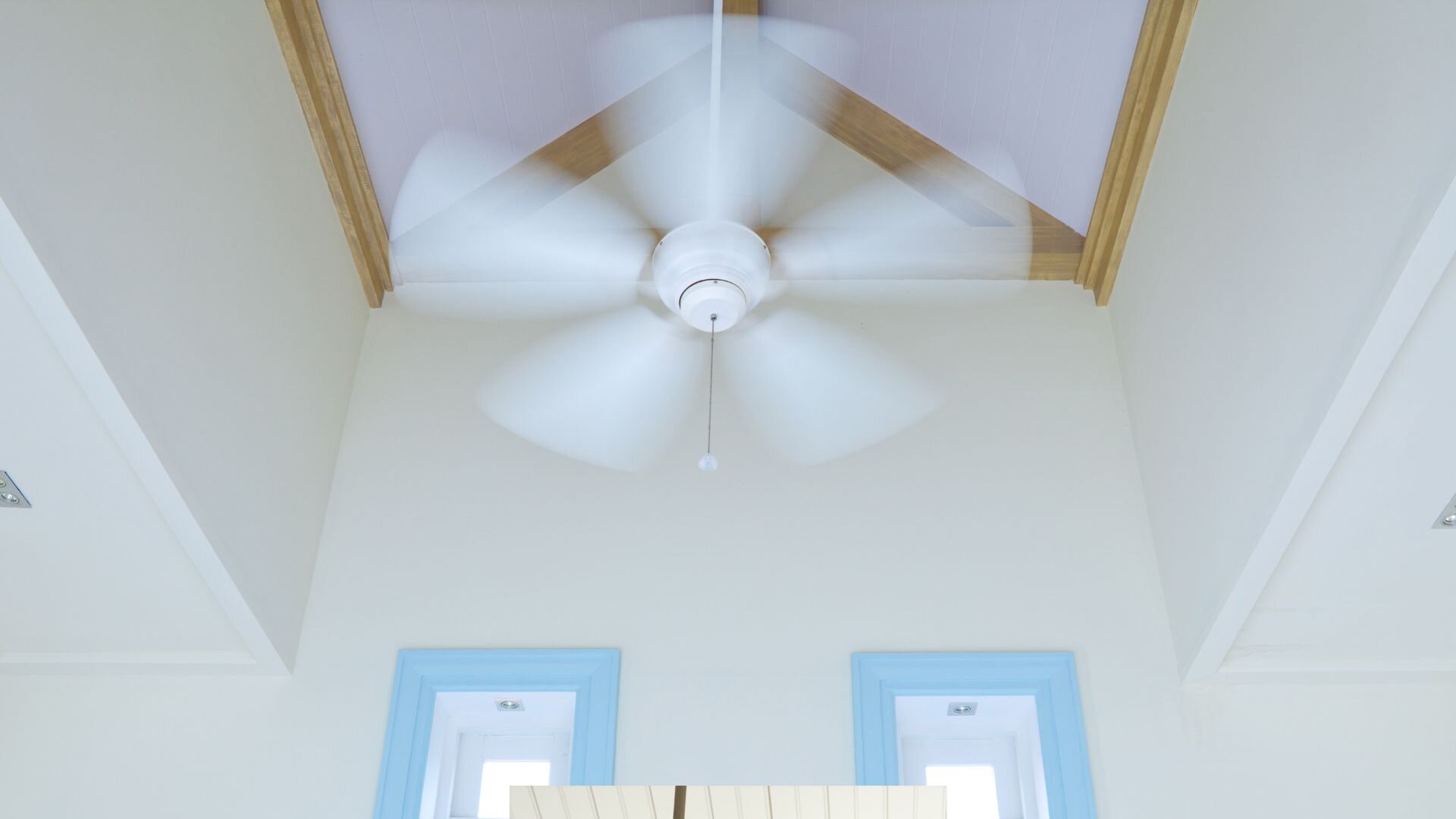At Enersol, our residential electrical services include professional ceiling fan installation across the Gold Coast. It's not just about flicking the switch and hoping for the best. Ceiling fan placement plays a massive role in how well they work. Put them in the wrong spot, and you'll get patchy airflow, wasted energy, and a room that still feels stuffy.
This guide breaks down the smartest ceilingfan placementstrategies so you can improve airflow, reduce energy use, and feel more comfortable all year round. From bedrooms to living rooms, we'll cover airflow tips, ceiling fan direction tricks, and expert ceiling fan installation advice to get it right the first time.
Why Fan Placement Matters
Ceiling fans don't cool the air-they keep it moving. Learn more about residential wiring guide. That movement creates a wind-chill effect, making the room feel cooler even though the temperature hasn't changed. It's simple physics, but for that to work properly, the fan needs to be in the right spot.

When a ceiling fan is poorly positioned-too close to a wall, tucked in a corner, or blocked by furniture, it struggles to circulate air evenly. The result? Dead zones, uneven temperatures, and a room that feels warmer than it should.
Place fans strategically to improve air circulation throughout the space. This helps reduce strain on cooling systems, making energy use more efficient without compromising comfort.
With the right ceiling fan installation tips, you'll create a steady breeze that flows across the room instead of bouncing off walls or furniture. This small tweak makes a noticeable difference to fan efficiency and year-round comfort.
Ideal Ceiling Fan Height and Room Size
Getting the height and size of your ceiling fan right isn't just about looks-it directly affects how well it works. A too-high fan won't move enough air where you need it, and one that's too low can feel overpowering or even unsafe. The goal is to keep the breeze strong and steady, no matter the room size.
Recommended clearance for safe and effective airflow:
- From the ceiling: Leave at least 30 centimetres between the ceiling and the top of the fan for proper air intake.
- From the floor: The fan blades should be 2.1 metres above the floor. This ensures safety and effective cooling, especially in rooms with standard ceiling heights.
- From walls or light fittings: Allow at least 45 to 50 centimetres of clearance from walls, cabinets, or pendant lights to avoid airflow obstruction.
Additional considerations:
- Use downrods to lower fans in rooms with high or vaulted ceilings.
- Consider flush mount fans in tight or low-ceilinged spaces to maintain clearance without losing efficiency.
Proper fan height ensures you get the most out of every rotation-quiet, efficient, and consistent airflow.
Best Placement in Common Rooms
Ceiling fans can make a big difference, but only if installed where they can do their job properly. Every room has its quirks, and what works in one space might not in another. Getting the placement right means thinking about how the space is used, where people gather, and how the air should move.
1. Bedrooms
In bedrooms, comfort during sleep is the priority. The best spot for a ceiling fan is directly above the bed. This provides a consistent breeze while you rest, helping regulate body temperature and reduce the need for overnight air conditioning.
- Avoid placing fans off-centre or near corners, leading to uneven airflow.
- Choose a model with quiet operation and dimmable lighting if it includes a light fixture.
- For low ceilings, use a flush mount design to maintain proper clearance.
2. Living Rooms
Living rooms are often larger and busier, so fan placement should support shared comfort.
- Centre the fan in the room or over the main seating area for even airflow.
- Consider installing two-spaced fans for open-plan layouts or large spaces.
- Keep the fan away from obstacles like pendant lights or beams that might disrupt air movement.
- Choose fans with a wide blade span to cover more area.
3. Kitchens
Kitchens are tricky due to heat, steam, and appliances.
- Mount fans away from direct cooking zones to avoid blowing air into range hoods or onto stovetops.
- Use compact or wall-mounted fans in tight kitchen layouts.
- Ensure blades are easy to clean, as grease can build up faster in kitchen environments.
- Maintain airflow without affecting the performance of appliances.
4. Dining Areas and Hallways
Fans should sit directly above the table in dining areas for even cooling during meals.
- Avoid high-speed settings that could interfere with hot food or candles.
- In hallways or narrow spaces, fans should be installed along the length of the corridor to guide airflow through the home.
- Flush mount fans work best in these confined areas to preserve headroom.
Seasonal Adjustments and Direction Tips
Ceiling fans aren't just for summer. With a simple change in direction, they can help regulate your home's temperature all year round. Most fans come with a switch or remote control that lets you reverse the blade rotation, and this minor adjustment makes a big difference in both comfort and energy use.

Here's how it works:
- Summer setting: Blades should spin counterclockwise. This pushes air down, creating a breeze that cools the skin and makes the room feel more comfortable.
- Winter setting: Switch the blades to clockwise at a low speed. This pulls cool air up and pushes warm air (which naturally rises) back down along the walls, evening out the temperature.
Switching between these settings improves air circulation and reduces the need for heating or cooling systems to work overtime. It's a simple ceiling fan direction trick that delivers year-round energy-efficient cooling with minimal effort.
Mistakes to Avoid When Installing Ceiling Fans
Ceiling fans might seem straightforward, but a few common installation mistakes can seriously affect their performance. Avoiding these issues ensures better airflow, safer operation, and a longer-lasting fan.
What to watch out for:
- Mounting too close to walls or corners limits airflow and creates uneven circulation throughout the room.
- Placing beneath or too close to pendant lights or beams: Light fittings and structural elements can block the air movement or create annoying flickering shadows.
- Using the wrong fan size: A too-small fan won't cool effectively, while a too-large fan can overpower a small space.
- Ignoring the ceiling type: Concrete or plasterboard ceilings need different installation methods and support to prevent long-term damage or instability.
- Skipping professional installation when wiring is outdated: Poor connections or overloading circuits can pose serious safety risks.
Avoiding these ceiling fan installation tips that go wrong helps your fan do what it's supposed to, quietly and efficiently.
Enhancing Fan Performance With Room Layout and Furniture
Even with perfect placement, your ceiling fan can only do so much if the room's layout works against it. Furniture, decor, and even where you sit can affect how air moves through the space.
Simple layout adjustments that improve airflow:
- Keep bulky furniture out of the fan's direct path to let air circulate freely.
- Arrange seating areas within the fan's airflow zone, especially larger rooms.
- Avoid placing tall shelves or cabinets directly beneath or beside the fan, as they can disrupt circulation and block airflow.
A few tweaks in layout can make your ceiling fan feel much more effective.
Choosing the Right Fan for the Room
Not all ceiling fans are created equal. The one you choose should suit the room's purpose, size, and design-visually and functionally.

Key factors to consider:
- Motor type: DC motors are quieter, more energy efficient, and offer more speed settings than traditional AC motors. They are great for bedrooms and living spaces.
- Noise levels and blade pitch: Look for a quiet ceiling fan with well-angled blades (12-15 degrees) for strong, consistent airflow without the hum.
- Materials: Timber blades are quiet and stylish for indoors, while metal is better suited to larger or industrial spaces.
- Smart features: Energy-saving fans with app or remote controls make operation simple and efficient.
- Outdoor use: Choose a weather-resistant fan built to handle moisture and changing temperatures for alfresco areas or covered patios.
Matching the right fan to the room makes a big difference in comfort and energy use.
When to Call an Expert
A ceiling fan installation isn't always a DIY job. Some setups require a licensed electrician to ensure a safe and reliable result.
- Fans mounted to concrete or metal ceilings need specialised tools and secure fittings.
- Older homes may require wiring upgrades or new wall controls for smooth operation.
- A professional ensures the job meets electrical safety standards, avoiding fire risks or costly repairs.
For a safe ceiling fan setup, it's worth calling a qualified electrician with experience in fan wiring services.
Ready to Feel the Difference?
Ceiling fans are more than decorative. They're an underrated tool for improving comfort and slashing energy bills. Getting the placement right means your fan does what it's supposed to without working overtime.
If you're unsure about positioning or need help with installation, Enersol Electrical is here to help. Our licensed electricians provide reliable, tidy, and timely ceiling fan services across residential and commercial spaces. Contact us today for expert advice and efficient ceiling fan installation across the Gold Coast that works.